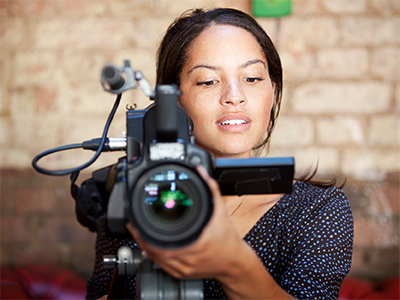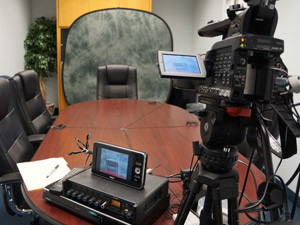The Benefits of Professional Legal Videography in Complicated Legal Cases
The Benefits of Professional Legal Videography in Complicated Legal Cases
Blog Article
Trick Benefits of Utilizing Videography in Legal Situations
The assimilation of videography in legal cases presents an array of tactical advantages that can dramatically affect test outcomes. As the lawful landscape proceeds to develop, the implications of leveraging videography in trial settings benefit more detailed exam, especially in understanding just how these advantages equate right into substantial outcomes in the court room.
Boosted Proof Presentation
Boosted proof presentation via videography has actually transformed the means lawful instances are argued and recognized in the court. By integrating top notch video recordings into legal proceedings, lawyers can communicate complicated details in a more interesting and comprehensible fashion - Legal Videography. Videography enables the visualization of evidence, making it less complicated for courts and courts to understand the context and significance of the presented realities
In addition to improving clearness, videography can likewise record real-time occasions, offering an authentic depiction of occurrences important to an instance. This immediacy can dramatically affect the persuasiveness of a disagreement, as visual evidence frequently reverberates a lot more strongly than written documentation. In addition, video evidence can include important elements such as body language, tone of voice, and ecological aspects, all of which add to an extra alternative understanding of the situation.
The use of videography additionally enables effective company of evidence, enabling attorneys to present their disagreements in a sensible and systematic way. By tactically incorporating video into their discussions, lawyers can promote a more reliable evaluation of the evidence, inevitably leading to notified decision-making by the court. The transformative power of videography in legal contexts is both indispensable and obvious.
Improved Witness Credibility

Video evidence can likewise reduce prospective prejudices that may occur from the witness's appearance or mannerisms in a live setup. By offering a well-produced video, lawful teams can make certain that the emphasis remains on the content of the statement as opposed to nonessential aspects that may undermine reputation. The possibility to review taped declarations can strengthen witness uniformity, as disparities can be dealt with prior to test, leading to even more dependable testaments.
In addition, the durability of videography offers a guard versus memory decay or false impression in time. By having a clear, proven account of witness statements, lawful practitioners can develop a stronger case, reinforcing the general trustworthiness of the witness and, subsequently, the stability of the judicial procedure.
Involving Jury Experience
Videography can dramatically elevate the jury's involvement throughout legal process. By integrating high-grade video discussions, legal groups can keep the interest and capture of jurors, changing intricate information into aesthetically engaging stories. This involvement is essential, as jurors typically struggle to take in thick lawful terminology and intricate information provided entirely through typical methods.
Video proof allows jurors to witness events as they unfolded, supplying context that created testaments might do not have. Making use of dynamic visuals can stimulate psychological feedbacks, making the case linked here extra relatable and unforgettable. For example, security video footage or reenactments can illustrate key minutes, allowing jurors to visualize the proof in an engaging way.
Furthermore, videography can promote a more interactive experience. Jurors can see and hear witnesses, which adds a layer of authenticity and immediacy that created transcripts can not reproduce. This multi-sensory technique cultivates deeper comprehension and retention of the here and now material.

Effective Situation Storytelling
A compelling narrative is vital for efficient case narration in the court. Videography works as an effective tool to craft and provide this narrative, involving the jury and enhancing their understanding of the situation. By aesthetically illustrating the events leading to the legal disagreement, videography allows attorneys to show complicated circumstances in a relatable and clear manner. This blog narration strategy can stimulate psychological feedbacks and foster empathy, creating a much deeper connection in between the jury and the case.
Incorporating elements such as witness interviews, repairs, and animations, videography supplies a multi-dimensional point of view that standard approaches can not accomplish - Legal Videography. This visual depiction not just aids in clarifying realities but also assists jurors retain critical details. Additionally, the vibrant nature of video clip can break down obstacles of comprehension, making complex details more accessible.
Inevitably, efficient instance storytelling through videography changes the court room experience, permitting attorneys to present their disagreements in a convincing and engaging fashion. By harnessing the power of visuals, lawful professionals can significantly boost their capability to communicate necessary stories and accomplish positive end results for their clients.
Conservation of Statements
Preserving testaments is a critical aspect of lawful proceedings, as the precision and honesty of witness declarations can considerably affect the result of a case. Videography serves as a reliable tool in this respect, making certain that testaments are recorded in their original context, thus minimizing the risk of false impression or distortion with time.
By recording non-verbal and spoken hints, videography offers a comprehensive account of witness declarations, which can be very useful during test process. This method not only records the material of the testament however also protects the disposition and emotional actions of witnesses, providing courts a richer understanding of the testament's trustworthiness and importance.
Additionally, using videography assists in a more dependable evaluation of statements during post-trial evaluations or pre-trial prep work. Lawyers can review taped declarations to clarify information, examine incongruities, or establish methods for interrogation.
Essentially, videography boosts the conservation of statements, promoting a transparent lawful process that can result in more equitable end results. By safeguarding the honesty of witness declarations, lawful practitioners can better promote for their clients and promote the principles of justice.

Final Thought
In final thought, the combination of videography in lawful situations considerably boosts the presentation of proof, boosts witness integrity, and astounds courts through involving visual web content. Collectively, these advantages underscore the vital duty of videography in modern-day lawful methods, inevitably adding to more enlightened judicial end results.
The assimilation of videography in lawful instances provides a variety of strategic advantages that can significantly affect trial end results.Enhanced proof presentation via videography has reinvented the method legal instances are argued and comprehended in the court room.Videography can considerably boost the jury's interaction throughout lawful process. By visually illustrating the occasions leading to the legal conflict, videography allows attorneys to illustrate complicated circumstances in a relatable and clear fashion.In conclusion, the assimilation of videography in legal instances substantially enhances the discussion of proof, strengthens witness integrity, and astounds courts through engaging aesthetic content.
Report this page